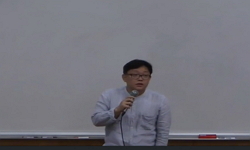2020년도 우리나라 정부연구개발예산은 24조원(전년 대비 18.0% 증가)을 넘어섰다. 특히 국가경쟁력 확보를 위한 소재부품장비 등 산업 분야와 그린뉴딜 정책에 따른 에너지 분야의 연구개발 ...
http://chineseinput.net/에서 pinyin(병음)방식으로 중국어를 변환할 수 있습니다.
변환된 중국어를 복사하여 사용하시면 됩니다.
- 中文 을 입력하시려면 zhongwen을 입력하시고 space를누르시면됩니다.
- 北京 을 입력하시려면 beijing을 입력하시고 space를 누르시면 됩니다.
DEA를 이용한 에너지 및 산업분야정부 R&D 사업의 효율성 분석 = Analysis of Efficiency in Energy and Industrial National R&D Programs using DEA
한글로보기부가정보
국문 초록 (Abstract)
2020년도 우리나라 정부연구개발예산은 24조원(전년 대비 18.0% 증가)을 넘어섰다. 특히 국가경쟁력 확보를 위한 소재부품장비 등 산업 분야와 그린뉴딜 정책에 따른 에너지 분야의 연구개발 예산이 확대되고 있다. 그러나 투자 대비 효율성 확보에 대한 비판이 지속적으로 제기되어왔다. 이에 따라 국내 여러 연구를 통해 정부 R&D 사업에 대한 분석이 선행된 바 있으나, 국내 에너지 및 산업 분야 R&D 사업 전반을 대상으로 분석한 연구는 없었다.
본 연구는 산업통상자원부 산하 R&D 전담기관인 한국에너지기술 평가원과 한국산업기술평가관리원에서 수행하고 있는 R&D 사업 중 26개 사업(에너지 분야 9개 사업, 산업 분야 17개 사업)을 대상으로 연구 투입 및 성과 자료를 분석하였다. 연구의 방법론으로는 R&D 사업의 효율성 측정을 위해 자료포락분석(DEA)을 이용하고, 비모수적검정법을 활용하여 집단 간의 효율성 차이를 살펴보았다. 상대적 효율성 비교 대상인 의사결정단위(DMU) 간 동질성 확보를 위해 R&D 사업의 목적이 기반구축, 인력양성 등이 아닌 기술개발 및 사업화 등 유사한 성과목표를 가지는 조건으로 연구대상 사업의 범위를 한정하였다. DEA 분석에 연구비, 참여인력, 박사 참여인력을 투입요소로, SCI 논문 수, 비SCI 논문 수, 특허출원 건수, 특허등록 건수, 사업화 매출액을 산출요소로 선정하였다.
효율성 분석 결과, 투입요소 중 연구비가 효율성 값에 가장 큰 10영향을 미침을 알 수 있었다. 상대 비교 대상이었던 26개 사업 중 약 42%인 11개 사업이 효율적으로 나타났고, 효율적인 DMU의 평균 사업비가 비효율적인 DMU의 평균 사업비의 약 2.7배에 달하는 등 사업(연구비) 규모에서 매우 큰 차이를 보였다.
또한 산출요소들의 종류에 따라 종합적 효율성, 논문 관련 효율성, 특허∙사업화 관련 효율성을 분류하여 분석한 결과, 사업 규모가 상대적으로 큰 R&D 사업들이 대체적으로 높은 효율성을 보였다. 사업 규모는 논문 성과에 비하여 특허 성과에 더 큰 영향을 미치는 것으로 드러났다. 사업의 목적이 다수의 특허를 창출하는 것이라면 사업 규모의 확대가 효과가 큰 것이다. 반면에 매출액은 사업 규모에 유의한 영향을 받지 않는 것을 알 수 있었다.
연구결과에 따르면 R&D 사업의 보다 높은 효율성을 달성하기 위해서는 사업 규모를 늘릴 필요가 있다는 것을 확인할 수 있었다. R&D 전담기관은 사업을 전략적으로 기획하고 관리하여 효율성을 개선해 나가야 할 것으로 보인다. 본 논문의 결과는 향후 우리나라의 정부 R&D 기획 및 성과목표 수립 등 성과 제고를 위한 기초자료로 활용될 수 있을 것으로 기대된다.
다국어 초록 (Multilingual Abstract)
Korean government’s R&D investment is continuously expanding, especially in the energy and industrial sectors. Expansion of R&D investment is desirable, but as criticisms about securing efficiency compared to investment are constantly being ...
Korean government’s R&D investment is continuously expanding, especially in the energy and industrial sectors. Expansion of R&D investment is desirable, but as criticisms about securing efficiency compared to investment are constantly being raised, and efforts to improve R&D efficiency are being requested.
The purpose of this study is to compare government’s investments against performances in the energy and industrial sectors by analyzing R&D efficiency, and therefore, to seek for solutions to invest in a more rational R&D and create better performance.
Among national R&D programs in the energy and industrial sectors, data was analyzed for 26 programs (9 programs in the energy sector and 17 programs in the industrial sector). To analyze, data envelopment analysis (DEA) was selected as the methodology of the study, and the difference in efficiency between the groups was examined using a non-parametric test. To secure the homogeneity between the decision-making units (DMU), the inclusion criteria for the selection of research programs was limited to R&D programs which have similar performance goals, such as technology development and commercialization, rather than the establishment of infrastructure and human resource training. In the DEA analysis, research funds, number of R&D researchers and doctoral participants were selected as input factors, and the number of SCI publications, non-SCI publications, number of applied and granted patents, and commercialization sales were selected as output factors.
As a result, it was found that among the input factors, the research cost had the greatest influence on R&D efficiency. Out of the 26 programs analyzed, approximately 42% of the programs (n=11) were found to be efficient, and the average program cost of an efficient DMU was about 2.7 times that of an inefficient DMU.
In addition, based on the analysis of output factors, R&D programs with relatively large budget sizes generally showed high efficiency, and budget size was found to have a greater impact on patent performance compared to publication-related performance. On the other hand, when analyzing only the commercialization index as the output factor, sales were not significantly affected by the size of the budget.
In conclusion, it was found that it is necessary to increase the size of the program budget to achieve higher efficiency of the R&D program, and it is expected that the efficiency should be improved by strategically planning and managing the R&D program. The results of this analysis are expected to be used as reference data for establishing government R&D performance goals and improving performance in the future.
목차 (Table of Contents)
- 제 1 장 서론 1
- 제 1 절 연구의 배경 1
- 제 2 절 연구의 목적 및 구성 5
- 제 2 장 DEA를 이용한 효율성 평가 8
- 제 1 절 연구개발사업 효율성의 정의 8
- 제 1 장 서론 1
- 제 1 절 연구의 배경 1
- 제 2 절 연구의 목적 및 구성 5
- 제 2 장 DEA를 이용한 효율성 평가 8
- 제 1 절 연구개발사업 효율성의 정의 8
- 제 2 절 자료포락분석(Data Envelopment Analysis) 10
- 제 3 절 자료포락분석(DEA) 모형 13
- 1. CCR 모형 13
- 2. BCC 모형 17
- 제 3 장 선행연구 20
- 제 1 절 문헌 고찰 20
- 제 2 절 선행연구의 의미와 한계 25
- 제 4 장 연구방법론 및 자료 27
- 제 1 절 분석 모형의 선정 27
- 제 2 절 자료 및 표본 선정 30
- 1. 의사결정단위 선정 32
- 2. 투입요소 및 산출물 32
- 3. 투입 및 산출지표의 타당도 37
- 제 5 장 분석 결과 41
- 제 1 절 효율성 분석 결과 41
- 1. 종합적 효율성 45
- 2. 논문 관련 효율성 51
- 3. 특허사업화 관련 효율성 56
- 4. 사업화 효율성 61
- 제 2 절 신규 지표를 활용한 결과와 비교 검토 66
- 1. 박사 참여인력 지표 관련 비교 분석 결과 66
- 2. 사업화 매출액 지표 관련 비교 분석 결과 71
- 제 3 절 사업별 세부 분석 74
- 1. 자원개발기술개발사업 74
- 2. 에너지자원순환기술개발사업 75
- 3. 원자력핵심기술개발사업 76
- 제 4 절 집단별 효율성 분석 결과 77
- 1. 기술분야별 효율성 77
- 2. 예산 규모별 효율성 78
- 3. 회계별 효율성 81
- 제 6 장 요약 및 결론 82
- 참고문헌 86
- Appendix 90
- Abstract 98












